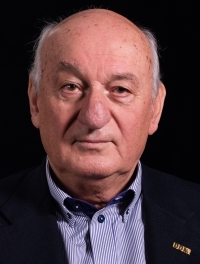They chased him from the town, where he should not have returned. Then, he build several bridges for them

Download image
Ivan Sestak was born on September 14, 1943 in Bratislava to Ervin and Anna Sestak. He has two siblings- older sister Anna and younger brother Pavel. Mother was a housewife, father was a respected construction engineer. In September 1955, on the day of Ivan’s birthday, STB transported Ervin Sestak to Leopoldov, where he was interrogated and imprisoned. Mother with three children was transported to the so called conspirationist villa in Bratislava, where they were held in captivity for several days. In the spring 1952, Ervin Sestak was sentenced to lifelong imprisonment for alleged treason in a political process. During the Christmas in 1952, their mother received the court order to move out from the flat till December 31, 1952. They had four days to move out, but were without a place to go. Thanks to intervention of mother-in-law, the mother received permission to move to Okrisek in Morava to a small room in mother-in-law‘s house. They lived in crammed conditions for several years, since they did not have right to another flat. Ervin Sestak was imprisoned in Leopoldov, Ilava and lastly Opava, where he was employed in so called „Prison Project“. After five years of imprisonment, he managed to achieve retrial in which he was sentenced only to two years. In 1956, he was thus released, the family could however only start living together in 1959, when they became eligible for a flat in housing project in Bratislava. Ivan Sestak did not receive recommendation for studies at high school and later at the university due to political reasons. In both cases, techaers helped him to optain it. He completed a gymnasium in Bratislava followed by Technical University, in the field of engineering constructions with specialisation in steel bridges. After finishing his studies, he was sent to national enterprise Doprastav. In August 1968, he witnessed shooting by Russian soldiers into civillians. He became main engineer in Doprastav, in 1990 he transferred to business and later general hedquarters as a production and production-technical deputy. In 1992, he became the general directior of Doprastav, which became a joint-stock company. In 1994, together with other six managers, he founded a company Doas, to which they invited employees of Doprastav as small stockholders. After a year, Doas took over Doprastav, which evolved into a bigger construction company in Slovakia. During Ivan Sestak’s career in Doprastav, the company have built or at least participated on construction of four out of five bridges across Danube in Bratislava.

